

HomeAbout ColombiaNewsPeopleScenic ViewsLinksAuthor
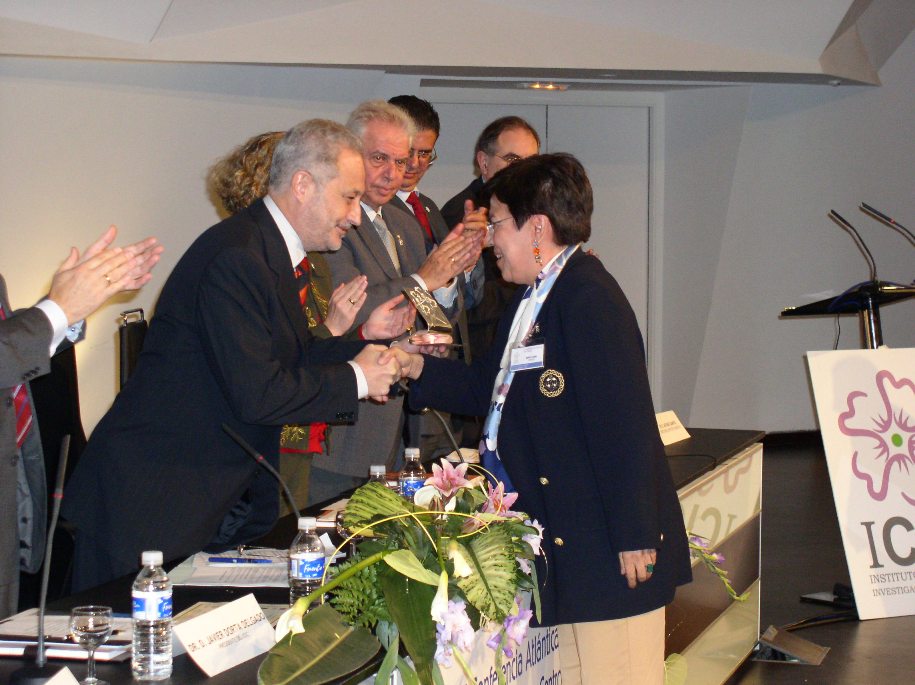
Every other year, the Charles Rodolphe Brupbacher Foundation bestows the Charles Rodolphe Brupbacher Prize for Cancer Research upon scientists who have made extraordinary contributions to basic oncological research. In 2007, the laureates were Lloyd J. Old, Robert D. Schreiber and Mark J. Smyth, for their contributions to cancer research in the field of immunology.
This year, the prestigious Prize goes to two well-known scientists in the field of cancer research whose work has had strong implications for public health: Dr Nubia Muñoz, of Colombia, for her contributions to the epidemiology of cancer causation by chronic infections, in particular the etiology of cervical cancer, and Sir Richard Peto, Professor of Medical Statistics & Epidemiology at the University of Oxford, for his contributions to cancer epidemiology, in particular the establishment of the causation of premature death by tobacco smoking.
Dr Nubia Muñoz, a long-time staff member of the International Agency for Research on Cancer, received her M.D. from the Faculty of Medicine of Cali, Colombia, in 1964. After a fellowship at the US National Cancer Institute (NCI), she started her IARC career as a trainee in the Unit of Epidemiology in 1969, and then went on to a post of staff scientist, working with Dr Calum Muir and Dr Nick Day. She continued her career at IARC where she led the Field and Intervention Studies Unit. She retired from the Agency in 2000, and now continues her research career as Emeritus professor at the NCI of Colombia and as a Consultant for the Catalan Institute of Oncology in Barcelona (Spain).
At IARC, she lead a major international programme of research, using modern lab techniques and showed that HPV infection by certain HPV types is one the strongest cancer risk factors ever found. Subsequent work produced precise estimates of relative risks that permitted defining the HPV genotypes that had to be targeted for prevention.
Read complete Press Release from 2009 Charles Rodolphe Brupbacher Prize for Cancer Research.
Read entire Press Release from the International Agency for Research on Cancer
Read the Laudatio of the Prize
Lee este compendio sobre Nubia Muñoz en Universia (en el 2006)
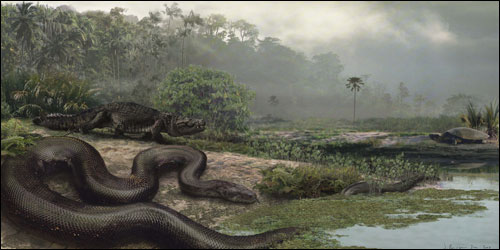
'Titanic' boa fossils provide clues to past tropical climate.
Researchers have found fossils of the biggest known snake in the world, a discovery that could shed light on the climate of the tropics in the past. The scientists estimate the snake lived 58 to 60 million years ago and was around 13 metres long. The giant, found in northeastern Colombia, dwarfs modern pythons and anacondas which usually don't exceed 6-6.5 metres and are thought to be the largest living snakes.
Since snakes are poikilotherms that, unlike humans, need heat from their environment to power their metabolism, the researchers suggest that at the time the region would have had to be 30 to 34 degrees Celsius for the snake to have survived. Most large snakes alive today live in the South American and southeast Asian tropics, where the high temperatures allow them to grow to impressive sizes.
"We've taken the snake and turned it into a giant thermometer," says lead author and vertebrate palaeontologist Jason Head of the University of Toronto in Canada, who says he "just about screamed" when he first saw the size of the fossils. “We've taken the snake and turned it into a giant thermometer.” Jason Head, University of Toronto.
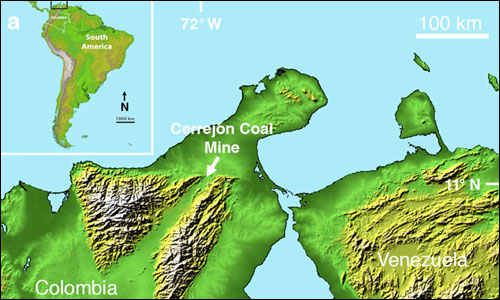 Head's colleagues discovered fossilized vertebrae and ribs from 28 individual snakes in an open-pit coal mine at Cerrejón. The vertebrae's structure suggests the snake is closely related to the boa constrictor, leading the team to name the species Titanoboa cerrejonensis, or 'titanic boa from Cerrejon'. By comparing the shapes and sizes of the two best-preserved vertebrae to those of living snakes, the researchers calculated that the snake was 12.8 metres long and weighed 1,135 kilograms.
Head's colleagues discovered fossilized vertebrae and ribs from 28 individual snakes in an open-pit coal mine at Cerrejón. The vertebrae's structure suggests the snake is closely related to the boa constrictor, leading the team to name the species Titanoboa cerrejonensis, or 'titanic boa from Cerrejon'. By comparing the shapes and sizes of the two best-preserved vertebrae to those of living snakes, the researchers calculated that the snake was 12.8 metres long and weighed 1,135 kilograms.
Read about this discovery in NPR's website.
More information found in Nature magazine

Scientists report 10 new amphibian species, plus birds and mammals
By Alan Boyle
Science editor
A treasure trove of potential new species has been uncovered in a modern-day Garden of Eden in Colombia, scientists announced Monday. They said the discoveries gave them hope that such biological frontiers could be saved from harm. Among the 10 amphibian species that may be new to science are an orange-legged rain frog, three poison dart frogs and three transparent-skinned glass frogs.
"Without a doubt, this region is a true Noah's Ark," Jose Vincente Rodriguez-Mahecha, scientific director of Conservation International in Colombia, said in a news release announcing the find. "The high number of new amphibian species found is a sign of hope, even with the serious threat of extinction that this animal group faces in many other regions of the country and the world." The animals were cataloged during an expedition to the mountainous Tacarcura area of the Darien, near Colombia's border with Panama. Conservation International's experts on amphibians joined forces with bird experts from the Ecotropia Foundation, with the support of the area's indigenous Embera community.
During their three-week expedition, the scientists identified about 60 species of amphibians, 20 reptile species and almost 120 species of birds, many of them apparently found nowhere else, Conservation International reported. The expedition also came across several types of previously known large mammals — including the Baird's tapir, which is considered endangered in Colombia, four species of monkeys and populations of white-lipped peccary.
View the new discoveries in a photo gallery from Conservation International.
More information found in Conservation International

MONTREAL -- Hard-hitting Juan Urango, from Montería, Colombia, knocked down hometown favorite Herman Ngoudjo twice in the third round, then cruised to a unanimous decision Friday night to capture the vacant IBF junior welterweight title. Urango (21-1-1), who lost the same belt to British star Ricky Hatton in January 2007, won the fight decisively on three wildly inconsistent scorecards. Judge Richard Green had it 118-108, Robert Doyle had it 120-106 and Pasquale Procopio 116-110.
"I fought a great champion -- it wasn't an easy fight," the 28-year-old Urango said. "I didn't think the fight would last 12 rounds. Give credit for that to Herman." Give credit to the ringside timer, too, who made the fight last nearly 13 rounds. The timer never rang the bell when the 10th should have ended, instead allowing it to drag on for 5 minutes, 10 seconds. Yvon Michel of co-promoter Seminole Warriors Boxing said that had a knockout or any other significant event happened during the extra time, the bout would have been invalidated."Someone made a mistake," Michel said.
Ngoudjo (17-3) is now 0-for-2 in title fights, having dropped a close decision to Paul Malignaggi for a junior welterweight belt on Jan. 5, 2008. He also lost by split decision in a title eliminator to Jose Luis Castillo in January 2007. Ngoudjo was dropped twice in the third round by Urango, a straight-ahead Colombian southpaw who hadn't fought in more than nine months. The transplanted Canadian, originally from Cameroon, stumbled to his feet both times and managed to finish the bout with a broken jaw.

Elton John, one of the world's most influential artists according to Forbes, performed in a concert in Bogotá, Colombia's capital on January 29th.
The scheduled concert took place in Corferias on January 29.
The concert was part of the artist's Latin American tour that also brought the artist to Venezuela and Mexico. The money raised with the tour was used to benefit the poor, the singer says. Elton John gave a charity concert in Bogotá. Click on the link below to see a video. In this video, the artist explains how he felt in 1995, when he last visited the country to give a concert.
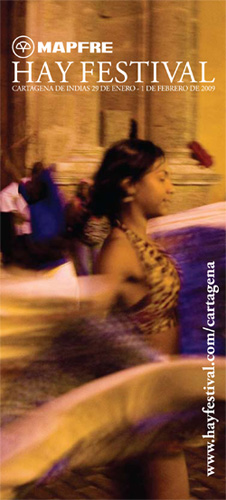
Cartagena, the city conjured for the world in Gabo's fiction, is the most magical setting for a party; and particularly a party with some of the greatest writers on earth. Time here is a gift of pleasure and imagination and romance. Please join us to share new stories and ideas, the finest seafood on the planet and as much dancing, laughter and life as you can handle. You'll be most welcome.
Cristina Fuentes, Director
Some of the distinguished writers that will be at this wonderful event are:
Salman Rushdie
Junot Díaz
Juan Manuel de Prada
Martin Amis
Joumana Haddad
Carlos Monsivais
Cristina FernÁndez Cubas
Nathan Englander
Benjamin Zephaniah
Short Story Contest also going on within the Hay Festival
RCN Radio & Television and the Colombian National Ministry of Education, with the support of the Ministry of Culture, the Instituto Caro & Cuervo, the Colombian Association of Universities (ASCUN) and MAPFRE Hay Festival Cartagena de Indias has announced a National Short Story Competition, aimed at students in primary, secondary and higher education throughout the country; it is the first such competition that will take place online in Latin America and on such a large scale.
Created in 2007 with the aim of helping to boost education through the promotion of creative writing to children, young people and students in Colombia, the RCN/Ministry of Education National Short Story Competition will coincide with the annual celebration of MAPFRE Hay Festival Cartagena de Indias, where the presentation of prizes to the winners will take place.
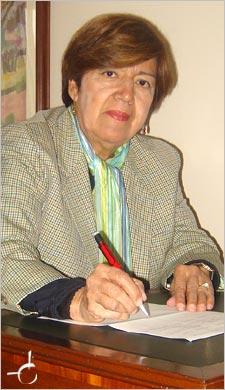
Nubia Muñoz Calero, from Cali, physician and pathologist, member of the committee of scientists in charge of supervising the Gardasil's clinic tests, was nominated for the Nobel Prize for Physiology and Medicine 2008. Recall that Professor Harold zur Hausen, a German virologist, received the award for his studies in the same field as Dr Nubia Muñoz has worked on: the human papillomavirus and cervical cancers.
Nubia graduated from the School of Medicine at Universidad del Valle in 1964. After graduation from Universidad del Valle, she worked for three years in the National Cancer Institute in Bethesda, where the headquarters of the National Health Institute is located. She got a Master's Degree en Public Health specializing in Epidemiology and Virology of Cancer in the School of Public Health of Johns Hopkins University in Baltimore. Then, she went to Lyon, France, to continue her research at the International Agency for Reseach of Cancer (IARC), which belongs to the World Health Organization.
Nubia Muñoz is a former winner of the First Richard Doll Prize In Epidemiology For Proving That HPV Causes Cervical Cancer. Her story is a remarkable one and will undoubtedly go down in the annals of epidemiology as an example par excellence of what all epidemiologists aspire to and can accomplish in studying the etiology of a disease.
Nubia Muñoz was a Postgraduate student, School of Public Health, 1968 to 1969, At Johns Hopkins. Nubia Munoz' work at the International Agency for Research on Cancer in Lyon, France, and with teams across the world led to establishing the relationship between the human papillomavirus and cervical cancers. This recognition of a viral cause of cervical cancer has led to the development of vaccines that would prevent these infections and that hold promise for the control and possible elimination of this cancer.
Nubia Muñoz was inducted in the Johns Hopkins Society of Scholars in 2004. This induction is to honor the significant accomplishments of men and women who spent part of their careers at Johns Hopkins. The society — the first of its kind in the USA — inducts former postdoctoral fellows and junior or visiting faculty at Johns Hopkins who have gained marked distinction in their fields of physical, biological, medical, social or engineering sciences or in the humanities and for whom at least five years have elapsed since their last Hopkins affiliation.
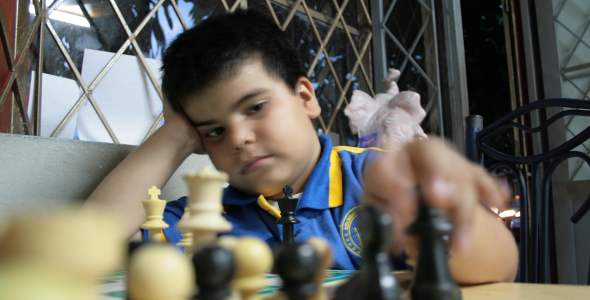
Colombian Jorian Jared Acosta Cubides became the best U-7 chess player in the world after winning the first place in the 4th World Schools Chess Championships 2008 in Singapore. In the Open U-7, Acosta Cubides Jorian Jared (COL) edged out Nathan Mar (SIN) by the smallest of tie-breaks.
Jorian Jared Acosta Cubides, from Colombia, is the highest rated 7-year-old in the world. He has a FIDE rating of 2003. Guha Mitrabha, from India and who is in second place, has a rating of 1648.
Jorian is from Villavicencio, Meta, has played chess for three years, goes to Cooperativo de Villavicencio school and belongs to Rey Dama Club. Jorian is current World Champion in Open U7, national Champion in the same category; he is also the national champion in the blitz division (5-minute quick matches), masnow division (person who lasts longer wining games), active chess division (25-minute games) and classic chess (2 to 3-hour games). The Colombian Chess Federation regards Jorian as the most complete all around player in his category and a future star.
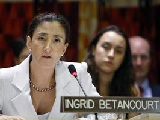
Colombian-French Ingrid Betancourt was selected as one of the most important People of the Year 2008 by Time Magazine. 17 people were elected as the most important people worldwid. Barak Obama was named Person of the Year and finalists were Henrry Paulson, USA Treasure Secretary, who led the $700K economy-rescue package; France president Nicolas Sarkozy; Sarah Palin, governor of Alaska; and Zhang Yimou, the man who designed, orchestrated, and performed the inaugural ceremony of the 2008 Olympic Games in Beijing.
This is what Time Magazine wrote about Ingrid Betancourt:
"She was held for six years by her captives, the rebels who call themselves the Revolutionary Armed Forces of Colombia (FARC). The 47-year-old Colombian-French citizen had been campaigning for president of Colombia when FARC soldiers took her in 2002. Her imprisonment eventually became a cause célèbre in Europe, and after a Colombian government operation freed her and 14 other hostages in July, Paris rejoiced. Later in the year, Betancourt toured South America to call attention to the plight of the 700-plus hostages that FARC still holds. It remains to be seen whether she can convert her own celebrity into freedom for others held victim to Colombia's dysfunctional politics."
John Cloud
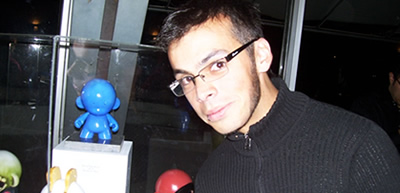
The winning projects of the 5th edition of the Peugeot Design Competition, won by 25 years old student Carlos Arturo Torres Tovar from Colombia, with his RD Concept. Emre Yazici (Turkey) and Lou Ke (China) have respectively placed second and third. Carlos is student of Industrial Design at the Universidad Nacional de Colombia, and his RD car design was the winner defeating designs from 93 countries. Carlos Torres, estudiante de diseño industrial de la Universidad Nacional, obtuvo una victoria casi por unanimidad con el carro que diseñó. Le ganó a diseñadores de 93 países.
The 5th Peugeot Design Competition closed on 2nd October 2008 with the opening of the Paris Motor Show. This edition, whose theme was "Imagine the Peugeot of the future World Megalopolis", received over 2,500 projects submitted by participants of 95 different nationalities.
5th Peugeot Design Contest, the theme:
“IMAGINE THE PEUGEOT IN THE WORLDWIDE MEGALOPOLIS OF TOMORROW”
Creating a Concept Car which is designed to evolve within the cities of the future, whilst retaining the key values of the 21st century. The projects should bear Peugeot's stylistic codes and must contain the following four aspects included in this design competition: environmental awareness, social harmony, interactive mobility and economic efficiency.
The Winners
1st prize: Peugeot RD by Carlos Arturo Torres Tovar - 25 years old - Colombia
2nd prize: Peugeot Ego by Emre Yazici - 45 years old - Turkey
3rd prize: Peugeot OXO by Lou Ke - 22 yers old - China
 Peugeot RD Concept
Peugeot RD Concept
by Carlos Arturo Torres Tovar - Colombia
The Peugeot RD concept which functions mainly through an ingenious articulation process, has impeccable road-holding properties, as well as the ability to thread its way easily through urban traffic.
Fitted with an environmentally-friendly electric engine, this single-seater concept car has a driving position that gives a new feeling of freedom with its panoramic view, vocal driving assistance and a head-up display system that gives all the information needed for safe journeys.
This concept combines the sensations of a 3-wheel scooter with the driving pleasure of a saloon, while retaining the functionalities vital to the combination of these two transport modes… with the addition of silence.
Accessible, tough, and extremely simple, the Peugeot RD concept is perfectly adapted to the environment of the future megalopolis with complex mobility constraints.

Jacqueline Piñol is an L.A. girl. Los Angeles has been her home and training ground since she was 5 years old. Jacqueline was born in Queens, New York, but her parents ditched the crazy winters to settle in weather reminiscent of their native lands…Colombia & Guatemala. She is a 100% high quality coffee bean.
She graduated from Beverly Hills High School in 1993, where she was a member of the renowned Madrigal Singers. Loves to learn foreign languages. She speaks Spanish, French, Italian and is now learning Mandarin Chinese!.
She was guest starring in the new season of "24" on FOX. Jacqueline also starred in CSI:N.Y. Check out her latest appearance on BURN NOTICE this season USA Network-Episode: "Turn and Burn". Other TV credits include: Burn Notice, Lincoln Heights, Tricks and Treats, Missing, Abduction, Blowback, Species: The Awakening, Heroes, How I Met Your Mother, CSI: New York, Personal Foul, Right Next Door, All in the Family, Child's Play, Las Vegas, CSI: Miami
Jacqueline just finished shooting the indie film THE FALLEN FAITHFUL playing the role of Maria Lupe. She stars opposite Sonny Marinelli, Obba Babatundé and Mark Margolis. The film is now in post production. She has been in a number of movies such as Max Payne, The Rocker, Bee Movie, Good Luck Chuck, Novel Romance, The Jane Austen Book Club, Barnyard: The Original Party Animals, John Tucker Must Die, The Marine, Monster-in-Law, Employee of the Month.
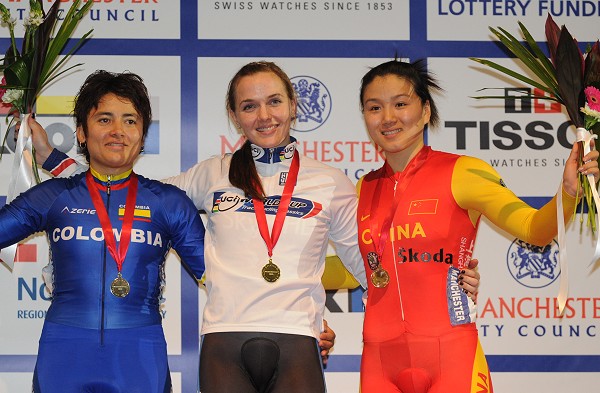
Colombia's Diana García placed 2nd in the women's Keirin 8-lap final won by Victoria Pendleton (Gbr) Team Sky + Hd with Jinjie Gong (Chn) China in 3rd in the UCI World Track Cup in Manchester, UK. Diana was born on March 17, 1982, in Barbosa, Antioquia, Colombia, and was the Gold Medalist in the PanAmerican Games of 2006 in Brasil in Sprint competition. Once the motorcycle moved away Diana ran in front most of the time. She did not want any surpises. Whe she took the last turn she realized she could win it. However, she lost the gold because she was runing out of power after the big effort.
Final
1. Victoria Pendleton (Gbr) Team Sky + Hd
2. Diana Maria Garcia Orrego (Col) Colombia
3. Jinjie Gong (Chn) China
4. Miriam Welte (Ger) Germany
5. Anna Blyth (Gbr)
6. Monique Sullivan (Can) Canada
7. Christin Muche (Ger) Germany
8. Jessica Varnish (Gbr)
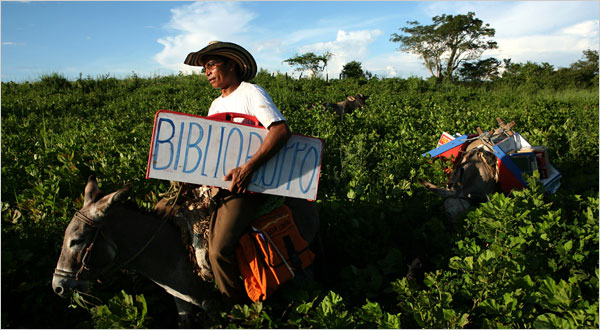
LA GLORIA, Colombia — In a ritual repeated nearly every weekend for the past decade here in Colombia’s war-weary Caribbean hinterland, Luis Soriano gathered his two donkeys, Alfa and Beto, in front of his home on a recent Saturday afternoon. Sweating already under the unforgiving sun, he strapped pouches with the word “Biblioburro” painted in blue letters to the donkeys’ backs and loaded them with an eclectic cargo of books destined for people living in the small villages beyond.
His choices included “Anaconda,” the animal fable by the Uruguayan writer Horacio Quiroga that evokes Kipling’s “Jungle Book”; some Time-Life picture books (on Scandinavia, Japan and the Antilles); and the Dictionary of the Royal Academy of the Spanish Language. “I started out with 70 books, and now I have a collection of more than 4,800,” said Mr. Soriano, 36, a primary school teacher who lives in a small house here with his wife and three children, with books piled to the ceilings. “This began as a necessity; then it became an obligation; and after that a custom,” he explained, squinting at the hills undulating into the horizon. “Now,” he said, “it is an institution.”
Click here to read the whole article
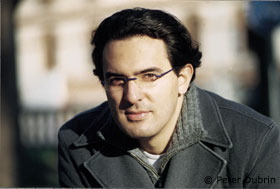
Juan Gabriel Vásquez is a 35-year-old Colombian author, and The Informers, his first novel to be published in English, suggests one way out of the conundrum. In this dense, intricate book, he returns to the history rather than the myth of his country, examining its dark corners and the consequences of actions by characters who cannot suddenly sprout wings and fly away from their destiny, as García Márquez might have it. In Spain his novel "Historia Secreta de Costaguana" (Secret Story of Costaguana) has been very well received. Juan Gabrial has been a permanent guest at different media sites such as the Babelia suplement of El Pais newspaper. His works have started to be translated in France and The United Kingdom.
In his The Informers novel, Vásquez shows a mastery of technique and language. The examination of the consequences that a single act can have not only for the person committing it but also, through the ripple effect, for many others brings us into the territory of Ian McEwan's Atonement. The novel may not have the fireworks of magical realism, but its sure construction of narrative and vivid portrayal of a wide array of characters build an extraordinary tale, one which reminds the reader that any novel can be a fascinating mixture of magic and realism.

Too far behind to do anything about the FedEx Cup, Camilo Villegas put together a stirring rally Sunday that was good enough to win the Tour Championship in a playoff over Sergio Garcia for his second straight victory.
Villegas overcame a five-shot deficit by making six birdies over his last 11 holes for a 4-under 66, then beat Garcia with a par on the 233-yard 18th hole used in the playoff.
The 26-year-old Colombian, who had gone 85 starts on the PGA Tour without winning, picked up his second in a row with a finish that brought the gallery to life on a sunny afternoon at East Lake.
He birdied the 17th hole from 12 feet to catch Garcia, then twice hit beautiful lag putts from outside 45 feet, once in regulation to finish at 7-under 273, then in the playoff to cap off his tour season in style.
Villegas, who should move to No. 6 in the world ranking Monday, earned $1.26 million for winning the Tour Championship. "I cannot emphasize how hard I've worked," Villegas said.
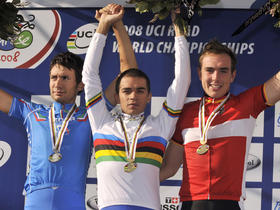
Fabio Andres Duarte of Colombia capped a superbly-timed attack with a cunning but deserved victory in the under-23 men's race here at the world road race cycling championships on Friday.Simone Ponzi of Italy came over the finish line, banging his fists in frustration, to take the silver medal with John Degenkolb of Germany claiming the bronze.
On a circuit that will be used by both the elite women's and men's field on Saturday and Sunday respectively, Duarte showed that collective strength can count for nothing if you don't attack at the right time.
While he was the only Colombian, of four in the race, to join up with a lead group after the halfway stage Italy found themselves with three riders on the 10th and final lap of the 17.33km circuit. But shortly after the red flag signalling the kilometre to go flag, Duarte stunned the hosts with a solo attack right after the final bend leading to the finish line.
As Ponzi and the remainder of the largely European eight-man leading group watched in frustration, the 22-year-old from Bogota came over the line in triumph to become the first ever Colombian to claim gold in the event.
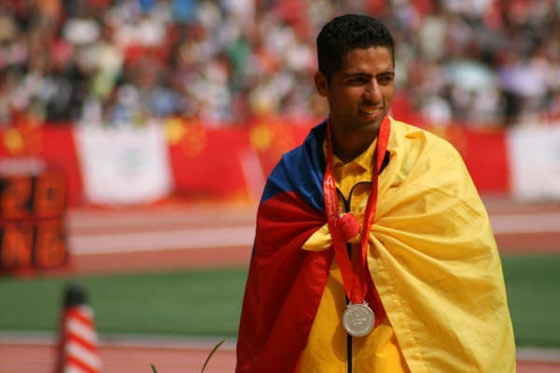
World records fell in three of the five divisions of the Sept. 17 Beijing Paralympics Marathon on the final day of competition. The 95 athletes from the combined five classes began together in Tiananmen Square at 7:30 a.m. local time.
Spectators in the Bird's Nest were treated to the race's most resonant performance as Chinese runner Shun Qi set a new world record of 2:30:32 to win the gold medal in the visually imparied class. Colombian Elkin Serna also broke the previous world record of 2:31:31, running 2:31:16 to win the silver medal. Russian Ildar Pomykalov rounded out the medals with a 2:33:27 performance. Defending Paralympic gold medalist Yuichi Takahashi of Japan was a disappointing 16th in 2:43:38, while Kenyan Henry Wanyoike, the world record holder going into the race, was one of two athletes not to finish the race
Men's Visually Impaired Runner Division - T12Men's Visually Impaired Runner Division - T12
gold: Shun Qi, China: 2:30:32 - WR
silver: Elkin Serna, Colombia: 2:31:16 - (WR)
bronze: Ildar Pomykalov, Russia: 2:33:27
4th: Abderrahim Zhiou, Tunisia: 2:35:26
5th Fabrizio Cocchi, Italy: 2:35:27

Colombia Dominates Medal Chart Again in the 2008 World Championships. Colombia has once again proved itself to be the world's top skating nation. Colombian skaters amassed 32 medals: 15 golds, eleven silvers and seven bronzes medals. No other country is even close. The next nearest competitors are Italy, South Korea and the United States.
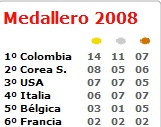 Italy has 20 medals: six golds, seven silvers and seven bronzes.
Italy has 20 medals: six golds, seven silvers and seven bronzes.
South Korea had 19 medals: eight gold, five silvers and 6 bronzes, for a total of 19.
One of Colombia's brightest stars (and medal earners) this year has been 16-year-old Pedro Causil in the junior division, who has emerged as the world's top up-and-coming sprinter. The 16-year-old has won three individual golds (in 300 meter and 500 meter on the track, and the 500 meter on the road) and two silvers. In the last event, Colombia’s Liana Holguin won the women’s marathon in front of Germany’s Sabine Berg in a bunch sprint.
The United States also had 19, although of a duller luster: seven golds, seven silvers and five bronzes.
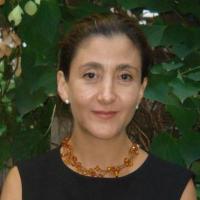
The Franco-Columbian politician, Ingrid Betancourt, has been bestowed with the 2008 Prince of Asturias Award for Concord, as made public today in Oviedo by the Jury responsible for conferring said Award.
After being held hostage for more than six years in the Colombian jungle, Ingrid Betancourt has become a worldwide symbol of freedom and human resistance in the face of severe hardship. Her struggle in favour of democracy has been an encouraging example of dignity and valour for the whole world.
This candidature was backed by Prince of Asturias Award Laureates Muhammad Yunus, Vicente Ferrer, Enrique Iglesias, Fernando Henrique Cardoso, Umberto Eco, Anthony Giddens, Mary Robinson, Woody Allen, Simone Veil, Belisario Betancurt, Javier Pérez de Cuéllar, Václav Havel, Mário Soares, Jacques Delors, Nicolás Castellanos, Luis María Anson and Juan Antonio Samaranch; by Prince of Asturias Foundation members Antonio Garrigues, Francisco Daurella and Fernando Masaveu; by France´s ambassador to Spain, Bruno Delaye, and by Spain´s Foreign Affairs Minister, Miguel Ángel Moratinos.

The final putt was the easiest one Camilo Villegas faced on the back nine of Bellerive, and when he rapped in the 2-foot par, he straightened his back, closed his eyes and tilted his head to the blue sky above.
His wire-to-wire victory in the BMW Championship seemed overdue, even though the 26-year-old Colombian is finishing up his third year on the PGA Tour.
Handed star treatment early because of his fashion model looks, chic clothing and ``Spider-Man'' style of reading putts on the green, he was growing impatient as other players in their 20s - Anthony Kim, J.B. Holmes, Sean O'Hair - piled up victories. Villegas believed winning was a process, and it finally arrived Sunday in St. Louis.
``It's awesome to be here, and I'm sure when I get a chance to spend a little time with myself, it's going to really sink in,'' Villegas said after closing with a 2-under 68 for a two-shot victory. ``And there's going to be a lot of memories of this week and of the past and how hard I've worked and how hard I've battled.''
He could have been talking about his journey from Colombia, earning a business degree at Florida while grappling to learn a new language, then becoming the first player from his country to win on the PGA Tour.
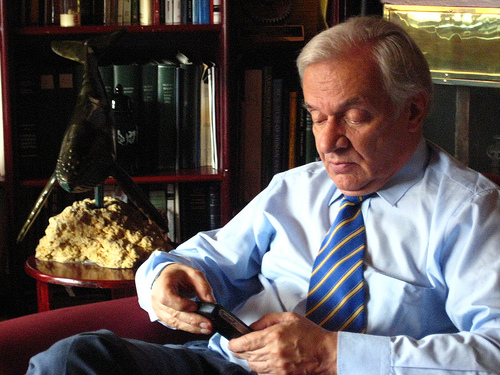
Colombian Dr. Jorge Reynolds' research on a super-small pacemaker modeled on the wiring of the humpback whale's heart and pigment-free colour coatings from the light-splitting structures of a peacock's feather are among a range of extraordinary new eco-breakthroughs emerging from mimicking nature. These and other commercially-promising advances, inspired by natural world and its close to four billion year-old history of "research and development" were selected as Nature's 100 Best innovations.
Humpback Heart Pacemakers
Over 350,000 people in the United States alone are fitted with new or replacement pacemakers annually. The cost of fitting a new device is up to $50,000 per patient.
Enter Jorge Reynolds, Director of the Whale Heart Satellite Tracking Program in Colombia, whose research is unraveling the mysteries of how the Humpack's 2,000-pound heart pumps the equivalent of six bath tubs of oxygenated blood through a circulatory system 4,500 times as extensive as a human's.
The work is also pinpointing how this is achieved even at very low rates of three to four beats a minute and how the electrical stimulation is achieved through a mass of blubber that shields the whale's heart from the cold.
The researchers have, through listening devices called echocardiographs and via autopsies on dead whales, discovered nano-sized 'wires' that allow electrical signals to stimulate heart beats even through masses of non-conductive blubber.
The scientists believe the findings could be the key to allowing the human heart to work without a battery-powered pacemaker and to stimulate optimal heart beats by by-passing or 'bridging' dead heart muscle via special whale-like wiring.
The world-wide market for pacemakers is expected to reach $3.7 billion by 2010. The new invention could cost just a few cents to make; reduce the number of follow-up operations because it avoids the need to install new batteries and thus supplant the traditional pacemaker.
"Nature's 100 Best" is aimed at showcasing how tomorrow's economy can be realized today by learning, copying and mimicking the way nature has already solved many of the technological and sustainability problems confronting humankind. According to Janine Benyus and Gunter Pauli, co-creators of the Nature's 100 Best project, "Life solves its problems with well-adapted designs, life-friendly chemistry, and smart material and energy use. What better models could there be?"
The Nature's 100 Best List, a mixture of innovations at various stages of commercialization from the drawing board to imminent arrival in the marketplace, is set to be completed by October 2008 in time for the IUCN Congress in Barcelona, Spain. The Nature's 100 Best book will be published in May 2009. Entrepreneurs of the Natural World Showcase Their Groundbreaking Solutions to the Environmental Challenges of the 21st Century. Nature's 100 Best Initiative Publishes Preliminary Findings on How to Green the Global Economy.
"Nature's 100 Best - Innovation that Inspire Entrepreneurs to Design the New Economy" will be presented at the IUCN World Conservation Forum on October 6 - 9, 2008 in Barcelona
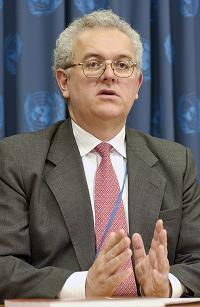
Tufts University’s Global Development and Environment Institute announced that it will award its annual Leontief Prize for Advancing the Frontiers of Economic Thought to José Antonio Ocampo of Columbia University and Robert Wade of the London School of Economics. The award ceremony will take place November 17 at Tufts University and will feature lectures bythe prize winners on the topic, “Beyond the Washington Consensus: New Visions for Trade and Development.” The Global Development And Environment Institute (GDAE), which is jointly affiliated with Tufts’ Fletcher School of Law and Diplomacy and Graduate School of Arts and Sciences, inaugurated its economics award in 2000 in memory of Nobel Prize-winning economist and Institute advisory board member Wassily Leontief, who had passed away the previous year. The Leontief Prize for Advancing the Frontiers of Economic Thought recognizes economists whose work, like that of the institute and Leontief himself, combines theoretical and empirical research that can promote a more comprehensive understanding of social and environmental processes. The inaugural prizes were awarded in 2000 to John Kenneth Galbraith and Nobel Prize winner Amartya Sen. “There is no longer any consensus, in Washington or elsewhere, that free trade, unregulated by government intervention, can produce broad-based sustainable development,” says GDAE Co-director Neva Goodwin. “José Antonio Ocampo and Robert Wade are among the most creative economic thinkers, combining rigorous analysis with empirically grounded research. Each of them is laying critical pieces of the groundwork that’s needed for solving global problems inways that will genuinely improve the lives of the world’s poor majority.” José Antonio Ocampo is one of the deans of Latin American economics. His numerous articles, books, and reports have made major contributions to development scholarship, and policy. He is a leading thinker on the reform of the international financial architecture and on macroeconomic policies to reduce the vulnerability of developing countries to international financial volatility. He worked in the United Nations, as Under-Secretary-General for Economic and Social Affairs and Executive Secretary of the Economic Commission for Latin America and the Caribbean, and held several cabinet-level government posts in his native Colombia.
He currently serves as Professor and Co-director with Joseph Stiglitz of Columbia University's Initiative for Policy Dialogue. His many books include Globalization and Development: A Latin American and Caribbean Perspective, Regional Financial Cooperation, and the forthcoming volume on Capital Market Liberalization and Development. Robert Wade has made seminal contributions to several fields of study. His book Governing the Market, on the state's role in East Asian development, won the American Political Science Association’s prize for Best Book in Political Economy. His Village Republics: Economic Conditions for Collective Action in South India, showed that the tragedy of the commons does not always hold true and that collective action can be an alternative to privatization and state control in the management of common property resources. The awards ceremony and Leontief Prize lectures will take place on Tufts University’s Medford Campus November 17, 2008.
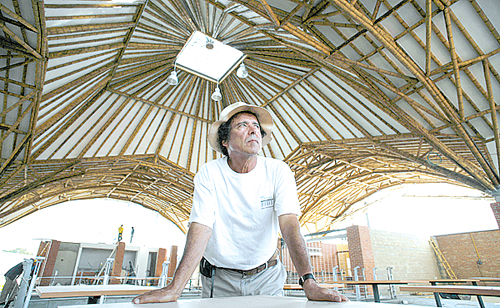
Simón Vélez is an acknowledged pioneer in the modern use of bamboo in architecture. In collaboration with his workers and his best friend, Marcelo Villegas, he developed the mortar-filled joinery system that allows the long-span, lyrical structures on this page to be built. Guadua ( Bambusa guadua angustifolia ) is the most visibly dominant bamboo in the Caldas region of Colombia. It has been used in architecture since the 1920's, and has been reinvigorated by the design talents of architect Simón Vélez and artisan Marcelo Villegas.
In the picture on the right, Colombian architect Simon Velez stands beneath a dome he is building from bamboo that will be the future site of a supermarket in Girardot, Colombia.
Bamboo is featured in an article on the Charleston Daily Mail newspaper of Charleston, WV. Titled "Bamboo, dubbed 'vegetal steel,' superb for building" with a subtitle "Forget steel and concrete. The building material of choice for the 21st century might just be bamboo", the article highlights the unique characteristics of bamboo and highlights the pioneer work of Colombian architect Simon Velez.
Colombian architect Simon Velez stands beneath a dome he is building from bamboo that will be the future site of a supermarket in Girardot, Colombia. .. This hollow-stemmed grass isn't just for flimsy tropical huts any more - it's getting outsized attention in the world of serious architecture. From Hawaii to Vietnam, it's used to build everything from luxury homes and holiday resorts to churches and bridges.
Boosters call it "vegetal steel," with clear environmental appeal. Lighter than steel but five times stronger than concrete, bamboo is native to every continent except Europe and Antarctica. And unlike slow-to-harvest timber, bamboo's woody stalks can shoot up several feet a day, absorbing four times as much world-warming carbon dioxide.
"The relationship to weight and resistance is the best in the world. Anything built with steel, I can do in bamboo faster and just as cheaply," said Colombian architect Simon Velez, who almost single-handedly thrust to the vanguard of design a material previously associated with woven mats and Andean pan pipes.
Velez created the largest bamboo structure ever built: the 55,200-square-foot Nomadic Museum, a temporary building that recently debuted in Mexico City and takes up half of the Zocalo, Latin America's largest plaza.
Click here to read the whole article.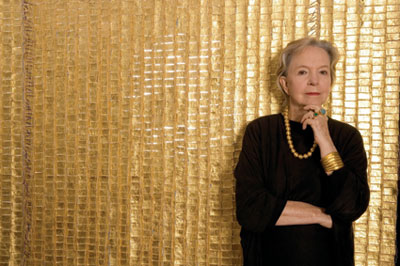
Visitors will be dazzled! Through May 25, 2008 the golden tapestries of Olga de Amaral will illuminate Eretz Israel Museum in Tel Aviv. Olga de Amaral creates her spectacular pieces by applying gold and silver leaf and acrylic paint to a blank canvas of woven silk, cotton, horsehair or linen. The result is a shimmering masterpiece that commands international recognition. Besides worldwide exhibitions, de Amaral's works have been included in collections at the Metropolitan Museum of Art in New York and Chicago's Art Institute. Olga de Amaral was born in Bogota, Colombia where she first studied architecture at the Collegio Mayor de Cundinamarca. However, it was at the Cranbrook Academy of Art in Michigan in 1954 where she discovered her love of textiles. After years of experimenting with design and color she created her signature work, golden panels that glisten as they catch light at different angles. The collection has been called serene, regal and shimmering. The Albuquerque Museum is proud to display Olga de Amaral's golden tapestries. The works are shown as part of the Promotion Plan of Colombia to the International Community. Internationally renowned Colombian fiber artist Olga de Amaral (shown below) received a Lifetime Achievement Award in November, 2005 as part of the Museum of Arts & Design’s 12th Annual Visionaries! awards.
Every weekday, starting as early as 7 in the morning and continuing until 7 at night, weary-looking men dressed in threadbare jackets and worn running shoes gather at the corner of Roosevelt Avenue and 73rd Street in Jackson Heights, Queens, under the gloomy shadow of the el. Swiveling their heads as if watching a tennis match, the men scan each passing car, in the hope that a driver will stop and offer up $100 in exchange for a 10-hour day of grueling labor on a construction or demolition project on Long Island.
But offers of work are few these days, and competition for jobs is intense. As winter approaches, a man can easily spend the entire day shivering and desperately hungry, because these day laborers, many of them from Mexico or elsewhere in Latin America, are not only poor immigrants in need of work; many are also homeless, or nearly.
“We come here to look for work,” said a 47-year-old Ecuadorean named Carlos Suarez as he hugged a cheap leopard-print comforter that serves as his bed. “There is none. What can we do?”
Mr. Suarez says that he has sometimes gone days without eating and has on occasion survived only on bread. But for the past three months, he has eaten at least one hot meal a day, thanks to a former illegal immigrant who, with the help of his mother, has become a guardian angel for these workers.
The man, Jorge Muñoz, is an elfin 43-year-old who goes by the nickname Colombia, a reference to the country from which he emigrated 21 years ago.
See this video from the New York Times:
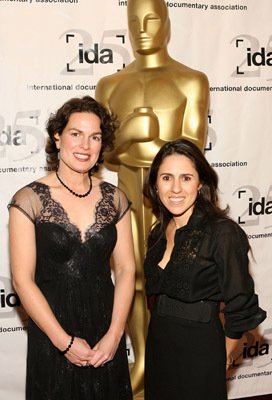
La Corona (The Crown), a short documentary directed by Amanda Micheli and Isabel Vega (from Colombia) has been nominated to the 2008 Oscars Awards. These are the first Academy Award nominations for Amanda Micheli and Isabel Vega (from Colombia). This is the film synopsis: In a women's prison in Bogotá, Colombia, the inmates compete in an annual beauty pageant. Four prisoners are profiled as they prepare for the contest; an unusual manifestation of a national obsession. La Corona already won honorable mention in short filmmaking at the Sundance Film Festival this year. "La Corona" will air on HBO later this year. For more information on Amanda Micheli and her films, go to www.runawayfilms.com.
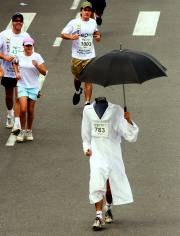
Jaime Osorio (medical doctor) and Henry Agudelo, both from Antioquia, were nominated among more than 44,000 entries to the Sony World Photography Awards, which is considered the Oscars of photography. Osorio was nominated in the nude category and Agudelo was selected in the sports category. Both work images full of creativity and perfect games between light and shadow. 10 professional and 7 amateur photographers have been shortlisted in each category from 44,641 professional photograph entries and 25,934 amateur photograph entries. The Awards will be celebrated in Cannes, France from 21st to 25th April 2008, with a top prize of $25,000 for the Sony World Photography Awards Photographer of the Year. Jaime Osorio quit his medical practice to dedicate full time to the research of image and photography. Hery Agudelo is a photographer for EL COLOMBIANO newspepaer. He is a two-time winner of the World Press Photo Award.
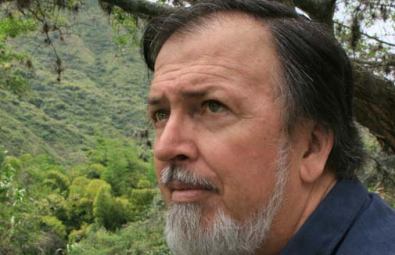
WASHINGTON (Dec. 11, 2007)— A leading Colombian environmentalist and a wildlife champion from the Democratic Republic of the Congo are this year's winners of the prestigious National Geographic Society/Buffett Award for Leadership in Conservation. Jorge Orejuela, founder and director of the Cali Botanical Garden in Colombia, receives the award for leadership in Latin American conservation; Inogwabini Bila-Isia, World Wildlife Fund leader for the Lac Tumba Landscape in the Democratic Republic of the Congo, wins for leadership in African conservation.
They will receive their $25,000 prizes at a ceremony at the National Geographic Society in Washington, D.C., on Thursday, Dec. 13. Established through a gift from the Howard G. Buffett Foundation, the awards acknowledge the winners' outstanding work and lifetime contributions that further the understanding and practice of conservation in their countries.
Orejuela, who is also professor in the environmental sciences department at Colombia's Universidad Autónoma de Occidente, is being recognized for his work over three decades in conservation education, protected area management and sustainable development in the tropics. His accomplishments include the establishment of the cloud forest nature reserve, La Planada, between Colombia and Ecuador, and the creation of the Environmental Area of the Fundación para la Educación Superior, Colombia's leading private conservation agency. He also helped establish Utría and Gorgona Island national parks and Quindio Basin and Calima River nature reserves. As a field researcher sponsored for 10 years by the World Wildlife Fund, he paved the way for the establishment of that organization in Colombia.
Trained as an ornithologist, Orejuela has worked on species as varied as orchids, condors, spectacled bears and bats. Since 1999 he has been director of the Cali Botanical Garden, recognized as a leading research center and part of a protected high-altitude area with important ecosystem representation.
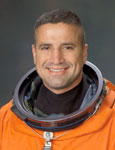
Carrying a crew of seven astronauts, space shuttle Discovery began mission STS-120 with a brilliant, on-time launch from NASA's Kennedy Space Center in Florida on Oct. 23, 2007. It landed on Nov. 7, 2007 at 1:01 p.m. EST at Kennedy Space Center. Among the seven crew members is pilot George Zamka Perez, whose mother Sofia Perez is from Colombia. Born in 1962 in Jersey City, New Jersey. Raised in New York City; Irvington, New York; Medellin, Colombia and Rochester Hills, Michigan. Married to the former Elisa P. Walker of Mississippi. They have two children. He enjoys weight lifting, running, bicycling, scuba and boating.
STS-120 was the 23rd shuttle mission to the International Space Station, and launched an Italian-built U.S. multi-port module for the station. Retired Air Force Col. Pamela A. Melroy commanded the STS-120 mission which took the Harmony Node 2 connecting module to the station. Melroy, a veteran shuttle pilot, was the second woman to command a shuttle. Marine Corps Col. George D. Zamka served as pilot. The flight's mission specialists were Scott E. Parazynski, Army Col. Douglas H. Wheelock, Stephanie D. Wilson and Paolo A. Nespoli, a European Space Agency astronaut from Italy. Zamka, Wheelock and Nespoli were making their first spaceflight.
I remember Medellín as a very nice place", said Zamka four years ago during an interview in Houston. According to him, it is easier for him to understand Spanish than speak it. "I went there to live with my mom when I was 14. In the beginning it was hard because I did not speak much Spanish. I had to learn it fast so that I could fit in school and play with my cousins. All of a sudden I had to learn how to play soccer and understand the jokes and colloquialisms and 'Colombianize' myself. When I got it, it was sensational. I remember we used to go to 'la finca' in Rio Negro. My school was in the mountains and I used to see the airplanes land almost above my head. Impressively, it looked like they were going to crash."
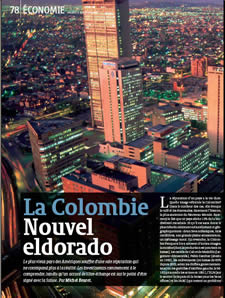
Colombia was the featured in the Economy section of the November 15 edition of famous Siwss magazine L’Hebdo. The article is titled "Colombia, the New El Dorado" and highlights the extraordinary richness of Colombia's culture and geography: two ocean coasts, three mountain cordilleras, 13% of world biodiversity, a huge Amazon plain, a unique ethnicity. This comes during the week in which European investment companies and banks are meeting with Colombian government in order to finalize the Free Trade Agreement with Europe (EFTA). The Switzerland has become the second investor country in Colombia. In 2007, ABB invested 10 million dollars and SIKA Group 8.5 million dollars. Nestlé had invested 45 million dolars in 2006 Glencore International AG did a record investment of 656 million dollars. The president of Swiss Re company, Peter Forstmoser, reminded that the main office for the Andean region is located in Bogotá. Mr Forstmoser added that Colombia is the second country in importance for Swiss Re in terms of commercial activity because is "politically stable and on of the largest economies of the continent. Beacuse its external debt is low and, from the human resource point of view, Colombians have an outstanding education and training". However, he added, "there is still a lot of prejudice about Colombia. I think it is more dangerous to cross a street in Rome than to travel to Colombia". The magazines subtitles the options to invest in Colombia as "A GOLDEN OPPORTUNITY". "Why Colombia?" The magazine answers "because along with Mexico and Chile, Colombia is the only country in the continent that offers Swiss investors a stable environment". The World Bank report “Doing Business 2007” placed Colombia in the second place in the countries that applied the most expectacular reforms in the business sector.
“IT’S TIME TO GO”. Another sign of media cover includes the Financial Time , FDI magazine, dedicated to Colombia with the title 'Colombia gets out of the shadows". Business Week titled the cover of May 28 "What are the most extreme emergent markets?" Answer: Colombia. The Guardian wrote also about Colombia on the July 8th Edition and so did The Economist with the sub-title "Seriously, it's safe". Turist guide magazine Lovely Planet dared to write "It's Time to Go". Of course there is still a lot to do. 55.7% of Colombians lived below the poverty level in 2002 and this index is still hihg (45%) now. FARC guerilla is still active, and the democratic security policy is sometimes questioned. But the article ends with a thoughtful question, "Will isolating Colombia help overcome these challenges?" The answer from more and more observers is "Of course no".

Current president of Leo Burnett Latin America and global CD for the P&G accounts and former president of Leo Burnett Colombia, Juan Carlos Ortiz, has been appointed as the new president of the network in North America, overseeing from Chicago their offices in Canada, Mexico and the U.S. Juan Carlos, who has been maybe the best advertising pro in our country at the moment, began his carreer as a creative. When he was the president at Leo Colombia, the agency was elected three years in a row as the best in the country, and he is the responsible for the very first gold in Cannes for the Colombian advertising with this ad for the government program against drugs:
So, congratulations to him and for the ones working in any of the Leo offices around North America that you can expect great things to happen with him in front.

Uribe Wins 2007 U.S. Women's Amateur Title
Carmel, Ind. — Maria Uribe, 17, of Colombia, survived one of the most hard-fought finals in recent history Sunday to defeat Amanda Blumenherst, 20, of Scottsdale, Ariz., 1 up, and win the U.S. Women’s Amateur Championship at the 6,497-yard, par-72 Crooked Stick Golf Club.
“This is the salary that I get because of all the hard work,” Uribe said. “I haven’t won a tournament in the States, and I win this one. That’s great for me. I’ll take it.”
Uribe and Blumenherst were never separated by more than a one-hole margin in their 36-hole match. They were all square after the morning 18. Blumenherst finally gave Uribe the winning edge on the 193-yard, par-3 35th hole.
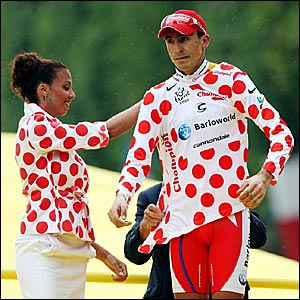
Juan Mauricio Soler Hernández (born January 14, 1983 in Ramiriquí, Boyacá) is a Colombian professional road bicycle racer for UCI Professional Continental team Barloworld. He competed in the Tour de France for the first time in 2007, winning stage 9 having broken away on the Col du Galibier. He won that year's King of the Mountains title. Soler stated the stage win was "a victory from heaven. It is the biggest win of my life, and in my first Tour de France. I didn't think it would come so quickly." Soler began racing at the age of 17, he stated a race in his village is what made him decide to become a professional cyclist. Upon becoming a professional, Soler spent a year racing in his native Colombia and soon after joined the Acqua & Sapone team where he was guided by Claudio Corti, who later brought him to his current team, Barloworld.

Jorge Castaño, from Jamundi, Colombia, is the only Colombian starring at Cirque du Soleil’ spectacle “O” at Bellagio, Las Vegas. Cirque du Soleil weaves an aquatic tapestry of artistry, surrealism and theatrical romance in the timeless production, “O.” Inspired by the concept of infinity and the elegance of water’s pure form, “O” pays tribute to the beauty of the theatre - from the simplest street performance to the most lavish of operas - where anything is possible and where the drama of life plays itself out before our very eyes. World-class acrobats, synchronized swimmers, divers and characters perform in, on, and above water to create a breathtaking experience. Jorge is one of the talented athlete/artists that ensamble the Barge act of “O”. With strength and fearlessness, this team of talented acrobats performs atop a floating raft in the Barge act. The core group is comprised of eight female world-champion sports acrobats. Their act combines innovative gymnastic performances with the traditional circus act of banquine and the balletic adagio. Showcasing these skills in a water environment completes this high-energy act, which also includes synchronized swimmers and Olympic divers.
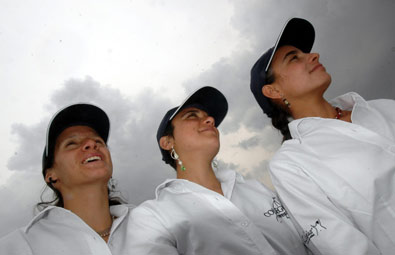
Ana María Giraldo, Katty Guzmán y Mónica Bernal reached Mt. Everest top at 8,848 meters over the see level on Thursday. The three women were very happy for this achievement which is part of their campaign in the fight against breast cancer. "We climbed an actual mountain, but women who suffer of breast cancer have to overcome a tougher mountain every single day", said Ana María Giraldo. The expedition started the jurney on April 11th, but it was until the second week of May when the base camps were ready. They became the first Colombian women to summit the highest mountain in the world! They achieved a goal many considered unthinkable. Also, Colombian Luis Felipe Ossa summited Everest on Wednesday from the north side, without supplementary O2, becoming the first Colombian to top-out Everest that way. Elkin Gonzales, who was climbing with Ossa, eventually turned back. Climbing in a second group, the three female team members, Ana Maria Giraldo, Katty Guzman and Monica Bernal reached the top on Thursday. Together with the women was the expedition leader Juan Pablo Ruiz, who achieved his second Everest summit after a previous ascent in 2001.
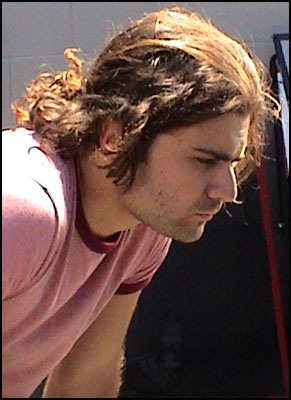
Spiros Stathoulopoulos’s ‘PVC-1’ will participate in the French film festival’s Directors Fortnight. The film is based on a true story and deals with a woman’s kidnapping
This year’s Greek entry at the Cannes Film Festival is in actual fact Colombian. “PVC-1,” directed by 29-year-old Spiros Stathoulopoulos, is participating in the Directors Fortnight and competing for the Camera d’Or award. “PVC-1,” a dramatic tale of kidnapping, will be screened as a Colombian production since Stathoulopoulos, whose father is Greek and whose mother is Colombian, grew up in Colombia.
Stathoulopoulos has been living in Los Angeles since 2000, working as a cameraman and film editor on various productions. He is a polite young man, proud of his work and excited at the recognition it has received. “The film is based on a true story that took place in Colombia in 2000. When I heard it I said it was terrible and I had to turn it into a film,” he said. “It is the story of a woman who is kidnapped. The kidnappers ask her family for a 7,000-dollar ransom and attach an explosive device to her body. The entire film is about her efforts to save herself and her family.”
Stathoulopoulos shot the whole film in an 85-minute unedited take. When reminded that similar attempts had been made in the past, including Alfred Hitchcock’s “Rope” and Aleksandr Sokurov’s “Russian Ark” he replies that it was different. “These were cases of filming with secret cuts. I wanted to do a clean one-take, which is why I used a digital camera. All filming took place in four days in Colombia. I handled the camera myself, it was a heavy steady cam and in order to ready myself I trained for five hours every day, for three months. I put in a lot of effort with the actors and a lot of preparation was needed. Everything had to be pre-planned in detail to shoot in a one-take. It was particularly hard for me to manage the heavy camera, because shooting took place in high temperatures, in places with rocks and water.”
Stathoulopoulos constantly refers to his Greek heritage with the pride that one encounters only among the Greek diaspora. His family decided to move to Bogota when he was 9 years old, but Stathoulopoulos went back every year and also came to Greece to do his military service. After completing his film studies in Colombia, he carried on studying in Los Angeles where he works to this day. He has also founded a production company, Kosmokrator Cinema.
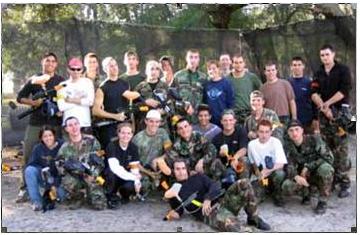
Diana Trujillo, 23 years old, from Cali, is working for Nasa since 2006 as a research team member. Rodrigo Ocampo, 21 years old, from Bogota has been chosen to work with another 18 interns from all over the world under the guidance of prestigious scientists. They are good reasons for Colombian citizens to be proud of. However there is something great about this presence: knowledge is spreading as a leading force for human beings from around the world to become active in world scenarios to make a better universe.
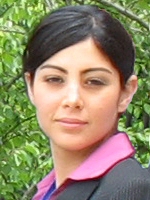
Diana is a student in Aerospace and Mechanical Engineering, Minor In Biomechanics, at th University of Florida in Gainesville, FL. In Diana Trujillo's personal statement at NASA she says "I left Colombia with the dream of becoming an Astronaut. In my plans, my first step was to learn English; Then graduate from a recognize university as an Aerospace Engineering, and then find my path towards NASA to become an Astronaut. Today, as I write this paragraph, I still can not believe that I can finally say "I am going to work in NASA this summer". This has been the greatest gift life can give me. Thank you!"
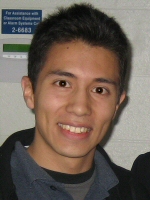
Rodrigo Ocampo is also a student of Aerospace Engineering and Mechanical Engineering at University of Florida. His personal statement at NASA is: "I believe everyone has a mission on this planet, to change the world for the better, and is everyone's responsibility to achieve this through each respective career a person chooses. I have chosen my path, that of Aerospace Engineering which combines my passion for space and all its mysteries as well as the development of new technologies that can benefit all kinds of peoples around the world. I intend to work from the inside with the U.S. Air Force to help influence world policy, advocate space and extend our reach to the stars. This path hasn't been easy, but I've taken the challenge head on, hard work, discipline, perseverance and friendship is what propels me forward in all my endeavors, from leaving Colombia and adapting to a new culture to being accepted in this great program. I thank my family for instilling such sense of responsibility and curiosity early on which I've developed even more so through the years."

Motorola, the technology giant from the USA,has a Colombian leader in its design department. Ruben Castaño, from Bogota, Colombia, is the director of the creative and development team who are the creators of the RAZR, the KRZR and other cell phones which are responsible of having Motorola on the winning side of a very competitive market in the electronic segment of the world communication revolution.
As per CNET editors review, something that mobile manufacturers are taking into consideration about the RAZR is the trendsetting design fashioned like no other handset before it.Besides the flashy form factor there are other great high-end goodies that are giving a new breath to Motorola as a world technologicalleader.

Marta Gomez,originally from Colombia has been featured in the recent Putumayo's "Women of the World: Acoustic". An exploration of contemporary acoustic music by some of the world's leading female artists. Marta Gómez has lived in the United States since 1999 when she began her studies at the prestigious Berklee College of Music in Boston. Putumayo first discovered her music when she sent a demo of her self-produced CD, Sólo es Vivir (It is Just Living), which features striking original songs inspired by a range of Latin American genres such as Colombian cumbia and bambuco, Argentinean zamba, Cuban son and Peruvian lando. “Paula Ausente” (Absent Paula) was inspired by the book Paula which was written by Chilean writer Isabel Allende.The author describes her search for meaning after the death of her daughter from a rare disease, and Marta Gómez was struck by the depth of a mother’s love for her child. “Paula was happy, with a brilliant mind / From so much laughing death arrived / Like an illusion, Paula grew up / Without knowing that time was slipping away.”

Colombian science journalist Angela Posada-Swafford launches a series of 10 novels of science and adventure for young adults during the 2007 Book Festival of Bogotá. Angela Posada Swafford is a US correspondent of Muy Interesante Magazine and writes in Wired and New Scientist as well. She writes and produces television and radio documentaries for NPR, Discovery Channel and others. In this picture on the right is Angela with Dr. Jorge Reynolds, who stars in her book "En el Corazon de las Ballenas" (In the Whale Heart). She has been with researchers in expeditions to remote locations such as the south pole, top of volcanos, ocean floor, etc. She was a winner of a Fellowship at MIT in Cambridge, Massaschusets, as an experienced science journalist. Angela has experienced zero gravity; interviewed Al Gore; pet a just-born gator. Congratulations!

Elizabeth Mora-Mass, a Colombian journalist who resides in New York City, was awarded the Fanny Calderón de la Barca Award by the Latin American Cultural Center of Queens. Elizabeth was awarded due to her series of journalist articles published on The Queens Courier and El Correo de Queens about human traffic and gangs, which are phenomena involving Hispanics. Mora-Mass holds a Master degree in Journalism from Columbia University where she won the Richard T. Baker Award in 1997, which is given each year to the Best Journalist of the Class. She was reporter for El Tiempo in Medellin and New York, El Colombiano in Medellin; and Aló Magazine. She has been editor of Beverage World en Español and columnist for La Prensa in New York. She is currently editor of Crónicas newspaper in New York.
Colombian artist Doris Salcedo will undertake the eighth commission in The Unilever Series for the Turbine Hall at Tate Modern since October 9, 2007 through April 13, 2008. Doris Salcedo was born in 1958 in Bogotá, Colombia, where she continues to live and work. Widely recognised as one of the leading sculptors of her generation, over the past five years Salcedo has increasingly addressed the public sphere in her practice and has completed several large–scale projects around the world. This will be Salcedo’s first public commission in the UK.
 Research
ResearchMore recently in 2006, Salcedo created a work in the eighteenth-century Castello di Rivoli, Turin entitled Abyss. This installation shrouded the white-washed walls of a room used for dynastic displays of power with a brick skin. Immaculately blindfolding the castle’s architecture, Salcedo created a vivid memorial to those excluded from systems of power, past and present. For her most recent exhibition in London, at White Cube in 2004, Salcedo embedded wire mesh into what appeared to be the gallery walls, to create an uncanny suggestion of being trapped in a confined space.
Domestic & unorthodox materials
Salcedo’s public works are an extension of her earlier sculptural practice which frequently featured ordinary household objects worn by age such as chairs, tables and wardrobes. Juxtaposing these relics of domestic life with unorthodox materials such as human hair, cement and garments, Salcedo turns familiar objects into visual metaphors for the suffering experienced by victims of violence and injustice. A monographic room containing three seminal sculptural works from Tate’s collections by the artist will be on view at Tate Modern from May onwards.

Professionally, she was known in Bogotá, Colombia, New York and London as Priscilla Welton. But to her students at the National Institute of Dance of New Mexico, she was just Priscilla. Most of her bereaved students didn’t know that Welton, the wife of noted Colombian writer Fernando Garavito, had endured the perils of fleeing Bogotá to escape the death squads targeting her husband for his journalism linking that country’s government to its drug cartels. With grace and indefatigable courage, Welton filled her family’s new home in Santa Fe with flowers and the smell of home cooking. Welton died Thursday at St. Vincent Regional Medical Center of complications after a stroke. She was 55. She was born in Bogotá in 1952. She studied classical ballet in London and received scholarships to the prestigious schools affiliated with the New York City Ballet and the Robert Joffrey Ballet Company. After advanced studies in Moscow, she founded and directed the Priscilla Welton School of Dance in Bogotá in 1981. The school was one of the few in the city that provided scholarships to children who couldn’t otherwise have afforded to study dance. Throughout a 32-year career, Welton choreographed and directed numerous productions; and many of her students became professional dancers.
Welton and her family were granted exile status in the United States and settled in Maine for a short time. They arrived in Santa Fe during Christmas week of 2003 with the help of J. Patrick Lannan, president of the Lannan Foundation, PEN New Mexico and the North American Network of Cities of Asylum. Welton joined the staff of NDI-NM and taught ballet at in its School for the Performing Arts. “She appeared at just the right moment for us, literally,” said Catherine Oppenheimer, the school’s founding artistic director. “Just a week before she walked in, I was saying that we needed a bilingual teacher because so many of our students are Spanish-speaking. She was a consummate professional, very strict with her students but very loving. You literally had to remind her that class was over. She routinely just kept going because she loved ballet so much.”
Donna Scheer, director of NDI-NM’s School for the Performing Arts, telephoned students and families to let them know Welton would not be coming back. “We feel a terrible loss,” she said. “You just don’t find people like Priscilla. She taught every level from 7-year-olds to our most advanced students and trained such exquisite dancers.” Lannan, who had become a close family friend, remembered Welton with profound respect. “She was a talented artist who brought such love for life even to the experience of exile,” he said. “I remember her as the rock of her family, an elegant, stable presence.”
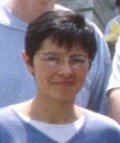
Colombian genetist Deya Corzo, from Bucaramanga, Santander, was one of the 10 New England women to be honored at the Annual Women to Watch event of the prestigious Mass High Tech magazine from New England. These women are go-getters, hard working, inspirational and motivational to their peers. These up-and-comers are continuing to grow and will shape the future of their industry. Passion and drive were the common themes among the honorees, each of whom spoke briefly, telling stories -- and sometimes jokes -- about their passion for science and learning, and its relationship to building a successful career in the traditionally male-dominated high tech industry. Thanks to Dr. Corzo's research treatment is now available for Pompe disease. On April 28, 2006 the Food and Drug Administration granted marketing approval for Myozyme® (alglucosidase alfa) in the U.S. Myozyme is indicated for use in patients with Pompe disease (GAA deficiency). MYOZYME has been shown to improve ventilator-free survival in patients with infantile-onset Pompe disease as compared to an untreated historical control, whereas use of MYOZYME in patients with other forms of Pompe disease has not been adequately studied to assure safety and efficacy.
Deya Corzo, M.D., medical director of the Myozyme program with Genzyme, believes that the project is a model for partnerships between industry and academia. “We were productive, we had tons of publications, and we had a great relationship,” she says. “My speed dial is full of Duke numbers. There have been disagreements, but people always saw the bigger goal, and were optimistic that this product could change the course of this horrible disease.”
Congratulations to this year's honoree Deya Corzo, Medical Director of Clinical Research, Genzyme Corp. From Bucaramanga, Colombia! See the following nice articles: Life-changing efforts , and
The Making of a Miracle
Capt. Eric Albarracin won all six of his Greco-Roman and freestyle matches to lead the All-Army wrestling team to its sixth consecutive Armed Forces Wrestling Championship on March 23-24. Albarracin opened each session of the two-day tournament with victories in the 121-pound weight class that sparked the Army squad to triumphs over the Navy, Air Force and Marine Corps. “I wanted to be the sparkplug, but the whole team stepped up,” said Albarracin, an Individual Readiness Training instructor who won gold medals in both disciplines. “The team got me ready, and I wanted to do it for the team and the Army. Wrestling is wrestling, and you’ve just got to be a warrior.”
Eric Albarracin is a Captain in the United States Army in the Individual Readiness Training Company. He is also the Officer in Charge of Modern Army Combatives (the Army's new hand-to-hand combat system) as well as an all-Army wrestler. Eric's father was born in Boyaca' Colombia in 1933 and lived in Bogota for 30 years and currently lives in Scottsdale, AZ. His Dad, Edilberto Javier Albarracin Rincon, always wanted to serve in the military but did not get the chance. Eric, however , is proudly serving in the US Army. He competed in the US Armed Forces Wrestling Tournament this past weekend in Greco-Roman and Freestyle Wrestling. He won a gold medal in both styles qualifying him for the Military World Games in Hyberadad, India in October.
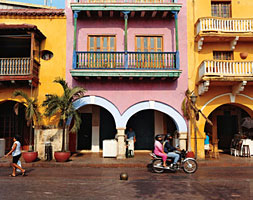
Even during Colombia's darkest years, Cartagena was spared. David Ebershoff visits this dreamy city by the sea, a place that wears its rich history as lightly as it does its languorous charm. The article's title is "Sleeping Beauty".
"I'm here to see how Colombia's long-running civil war has treated Cartagena, the languid, legendary colonial city on the Caribbean made familiar to many by Romancing the Stone or the fiction of Gabriel García Márquez, depending on one's point of reference. Cartagena's history is an amalgam of Spanish, native Indian, and African heritage. Catholicism has always been the dominant religion, but Jews, Muslims, and practitioners of the indigenous religions have had their influence as well. This diverse history presents itself in the faces of the roughly one million citizens, who are for the most part of mixed descent, and in its architecture, its percussion-heavy music, its very pace of life. It's a steamy, tropical city edged in by the sea and the mangrove swamps. The midday sun is cruel, the trade winds arrive only late in the afternoon, and the air is sleepy, lazy with the knowledge that the next day will be the same as today." See the whole article at www.concierge.com.
Click here to learn about more positive news about Colombia.
 |
HOME: NICE LOOK OF COLOMBIA |  |
 |
 |
| Drop us a line! |  |